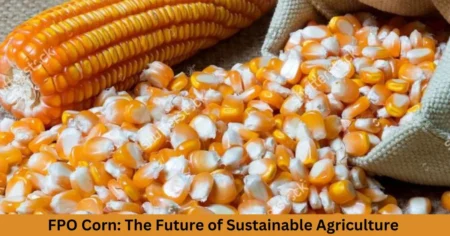In today’s fast-paced and globalized world, communication is key. The ability to understand and be understood across language barriers has never been more crucial. This is where prekladača comes in. Derived from the Slovak word for “translator,” prekladača refers to a wide array of translation tools and services that are transforming the way we interact with people of different languages and cultures. This article will explore the concept of prekladača, its applications, benefits, challenges, and future prospects.
What is Prekladača?
Prekladača encompasses any tool, device, or service that aids in translating one language to another. It can range from simple dictionary apps to sophisticated machine translation systems that use artificial intelligence and natural language processing to deliver accurate translations. The purpose of prekladača is to bridge the communication gap between speakers of different languages, making the world a more connected place.
Types of Prekladača
Human Translators
These are professional individuals who specialize in converting written or spoken material from one language to another. Human translators often provide the most accurate translations, considering cultural nuances and context.
Translation Software
These are applications and programs designed to translate text from one language to another. They range from basic word-for-word translation apps to more advanced software that provides context-aware translations.
Machine Translation
This is the process of using algorithms and artificial intelligence to automatically translate text or speech. Google Translate and DeepL are prime examples of machine translation services that have gained popularity due to their convenience and accessibility.
Real-Time Translation Devices
These are gadgets that can translate spoken language in real-time, making face-to-face communication across languages more seamless. Devices like Pocketalk and Travis Touch have become valuable tools for travelers and international business professionals.
Online Translation Services
These platforms connect clients with professional translators for translating documents, websites, and other materials. Websites like Fiverr and Upwork offer access to a global network of freelance translators.
Applications of Prekladača
The applications of prekladača are vast and varied, impacting numerous industries and aspects of daily life. Here are some key areas where prekladača plays a vital role:
Business and Commerce
In the realm of business, prekladača is indispensable. Companies operating on a global scale need to communicate with clients, partners, and employees across different regions. Translation tools facilitate the localization of marketing materials, legal documents, product manuals, and more. They ensure that businesses can effectively convey their message and build strong international relationships.
Education
Education is another area where prekladača proves to be invaluable. Students studying foreign languages can use translation apps to aid their learning process. Additionally, educational institutions offering courses to international students rely on translation services to provide materials in multiple languages, making education more accessible and inclusive.
Travel and Tourism
For travelers exploring foreign lands, language barriers can be a significant hurdle. Prekladača tools come to the rescue by providing real-time translations of signs, menus, and conversations. This enhances the travel experience, allowing tourists to immerse themselves in new cultures without the fear of miscommunication.
Healthcare
In healthcare, clear communication is essential. Medical professionals often encounter patients who speak different languages, and any misinterpretation can lead to serious consequences. Translation services ensure accurate communication between doctors and patients, improving patient care and safety.
Legal and Government Services
Legal documents and government communications must be precise and unambiguous. Prekladača assists in translating contracts, regulations, and official documents to ensure compliance with local laws and regulations. In government services, translation tools help disseminate information to citizens who speak various languages, promoting inclusivity and understanding.
Benefits of Prekladača
The adoption of prekladača offers numerous benefits that have revolutionized how we communicate across language barriers:
Increased Accessibility
Prekladača makes information accessible to a broader audience, breaking down language barriers that previously hindered communication.
Cost Efficiency
Machine translation and online services are often more cost-effective than hiring full-time human translators, making them a viable option for small businesses and individuals.
Speed and Efficiency
Automated translation tools provide quick results, enabling real-time communication and reducing delays in business processes.
Global Reach
Businesses can expand their reach to international markets by localizing content, ultimately increasing their customer base and revenue.
Cultural Exchange
Translation fosters cultural exchange by allowing people to access literature, media, and art from different parts of the world, enriching their understanding of diverse cultures.
Challenges of Prekladača
Despite its numerous advantages, prekladača is not without its challenges. Here are some of the common issues associated with translation tools:
Accuracy and Context
One of the most significant challenges of machine translation is ensuring accuracy and preserving context. While algorithms have improved over the years, they still struggle to understand cultural nuances, idiomatic expressions, and context-specific meanings. This can result in translations that are technically correct but lack the intended meaning or tone.
Language Complexity
Languages are complex systems with unique grammar rules, vocabulary, and cultural references. Some languages have multiple dialects, each with its own variations. Accurately translating such languages requires a deep understanding of their intricacies, which can be challenging for automated systems.
Privacy Concerns
Using online translation services often involves sharing sensitive information. Privacy concerns arise when personal or confidential data is processed through third-party platforms. Ensuring data security and privacy is paramount for individuals and businesses relying on prekladača.
Limitations of Machine Translation
While machine translation is convenient, it has its limitations. Complex legal documents, scientific research papers, and creative works often require human translators who can provide nuanced translations that capture the essence of the original text.
The Future of Prekladača
As technology continues to advance, the future of prekladača holds exciting possibilities. Here are some trends and developments to watch for:
Artificial Intelligence and Neural Networks
The integration of artificial intelligence and neural networks is revolutionizing machine translation. These technologies enable systems to learn from vast amounts of data, improving accuracy and context understanding. Neural machine translation (NMT) models, like OpenAI’s GPT series, are capable of producing more human-like translations by capturing context and nuances.
Multimodal Translation
Multimodal translation combines text, speech, and visual inputs to provide comprehensive translations. For example, a traveler could use a smartphone camera to capture a foreign street sign, and the app would translate the text in real-time while providing audio pronunciation. This approach enhances user experience and expands the range of applications for prekladača.
Real-Time Voice Translation
The development of real-time voice translation technology is set to revolutionize communication in diverse settings. From international conferences to casual conversations, real-time voice translation allows participants to speak naturally while the system provides instantaneous translations, eliminating language barriers.
Personalized Translation Services
Future translation tools will likely incorporate user preferences and context to deliver personalized translations. This could involve adjusting tone, formality, and cultural references based on the user’s profile and past interactions. Personalized translations enhance user satisfaction and ensure that the translated content aligns with individual preferences.
Expansion to Lesser-Known Languages
Efforts are underway to expand prekladača services to include lesser-known and endangered languages. Preserving linguistic diversity is crucial, and providing translation support for these languages promotes cultural preservation and inclusivity. Initiatives like Google’s Noto Project aim to support writing systems for all languages, ensuring they remain relevant in the digital age.
Ethical Considerations in Prekladača
As prekladača technology continues to evolve, ethical considerations must be taken into account. Ensuring fair access, data privacy, and cultural sensitivity are crucial for responsible development and deployment of translation tools. Here are some ethical considerations to keep in mind:
Fair Access
Translation services should be accessible to individuals and communities regardless of their socio-economic status. Ensuring fair access to prekladača tools helps bridge the digital divide and promotes inclusivity.
Data Privacy
Protecting user data and maintaining privacy is paramount in translation services. Companies must implement robust security measures to safeguard sensitive information and ensure that user data is not misused.
Cultural Sensitivity
Translation tools should be designed with cultural sensitivity in mind. This involves understanding and respecting cultural norms, traditions, and values to avoid misinterpretations or offensive translations.
Bias in Translation
Machine translation systems can inadvertently perpetuate biases present in training data. Efforts should be made to identify and mitigate biases to ensure fair and unbiased translations.
How to Choose the Right Prekladača Tool
With the abundance of translation tools available, choosing the right prekladača can be challenging. Here are some factors to consider when selecting a translation tool:
Purpose
Identify the purpose of the translation. Is it for casual communication, professional use, or academic purposes? Different tools excel in various contexts, so understanding your needs is crucial.
Language Pair
Consider the languages you need to translate between. Some tools offer better support for specific language pairs, providing more accurate translations for those combinations.
Features
Evaluate the features offered by the translation tool. Does it support text, speech, and image translation? Does it offer offline functionality? Assessing the features ensures that the tool meets your requirements.
User Experience
A user-friendly interface enhances the overall experience of using a translation tool. Look for intuitive navigation, ease of use, and additional features that improve usability.
Cost
Consider the cost of the translation tool, especially if you’re using it for business purposes. While some tools are free, others require a subscription or one-time payment. Evaluate the pricing structure to ensure it aligns with your budget.
FAQS
What is Prekladača?
Prekladača is a translation tool that helps you convert text from one language to another quickly and accurately.
How do I use Prekladača?
Simply enter the text you want to translate, select the source and target languages, and click the translate button.
Is Prekladača free to use?
Yes, Prekladača offers a free version for basic translation needs. Premium features may require a subscription.
Which languages does Prekladača support?
Prekladača supports a wide range of languages, including but not limited to English, Spanish, French, German, Chinese, and many more.
Can I use Prekladača on my mobile device?
Yes, Prekladača is available as a mobile app for both iOS and Android devices, allowing you to translate on the go.
Conclusion
Prekladača, or translation tools, have become indispensable in our increasingly interconnected world. They break down language barriers, foster cultural exchange, and enable effective communication across diverse contexts. From businesses expanding their reach to travelers exploring new
Read More: The Housemaid Series: From Classic Film to Modern TV








